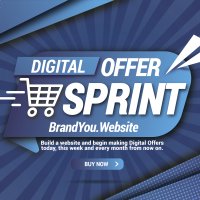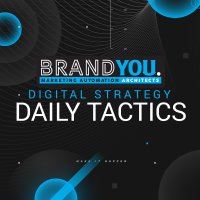If you're a small business, you know that one of your most important tasks is retaining current customers while acquiring new ones. But, how can you do that effectively without breaking the bank? One way is through automated monthly digital offers. By dividing your customer base into different segments and crafting unique offers for each, you can increase sales while keeping marketing costs down.
This guide will teach you how to create customer segments based on past behavior, then use those segments to automate monthly digital offers. With the right tools and a little effort, you can start seeing results in less than 90 days.
What is Lead Nurturing?
The very first step in acquiring customers is creating segmented customer offers. Lead Nurturing looks at past behavior and is your strategy to engage with them in the future.
What types of products or services did your customers buy?
What was the average purchase amount?
How often do they make a purchase?
By understanding what type of customer someone is, you can create offers that are more likely to appeal to them.
For example, if most of your customers buy one product every three months, you might want to consider offering them a discount on their next purchase if they buy within the next month. Or, if your customers have an average purchase amount of $100, you could offer them a bonus item for spending over $150.
These are just examples, but by thinking about what appeals to different types of customers, you can create tailored offers that are more likely to result in a sale.
Even if someone doesn't buy anything the first time they visit your site, there's no reason to give up on them. Continue providing valuable content and keeping the lines of communication open so you're top of mind when they're ready to make a purchase.
By following these tips, you'll be able to create customer segments that will help you increase sales while keeping marketing costs down. And, with the help of Marketing Automation using automated monthly digital offers, you can keep your customers happy and engaged all year long.
How to Define Your Email Messaging sequence?
Now that you have a general understanding of how customer segments work, it's time to start defining your email messaging sequence. Some call this a "drip campaign" and others call it an "automated email nurture program".
Your goal is to create an automated daily, weekly or monthly series of messages that will engage customers and encourage them to buy from you.
To get started, think about the different stages a customer goes through before they make a purchase.
There are typically three main stages: Awareness, Interest, and Desire.
Each stage has its own set of goals, and your email messaging sequence should be tailored to achieve those goals.
Here at Brand You we believe the best way to get customers to continue to buy from you is by educating them. We literally believe in answering the questions that our customers ask is the Ultimate Digital Strategy.
What is Customer Segmentation?
Customer segmentation is one of the most important tasks in the customer relationship management (CRM) process, and it’s an essential first step in creating a marketing strategy. Before you can create an effective marketing plan or choose the right customer segmentation model, you need to understand how your customers can be grouped together.
Segmentation is often based on age, income, education level, gender, occupation, lifestyle, personality, or any other factor that can be used to identify specific groups of customers. It generally makes sense to segment customers by such “attributes” because when you do this you can identify different needs and offers for different segments.
Identifying your target markets is relatively simple if you think about the different types of people who might be interested in what you have to offer.
How to Grow Your Business Using Segmentation?
Treating all of your customers as though they are exactly the same is a recipe for failure. You will not be able to provide each customer with exactly what he or she wants if you don’t know who they are. By identifying each customer’s unique needs, you’re able to meet those needs better and increase your likelihood of retaining that customer.
The following list doesn’t cover every type of customer segmentation, but it provides you with a starting point for organizing your customers. Marketing professionals identify around 7 Customer Segmentation Models
7 Customer Segmentation Models: attributes to segment your customers:
Demographic Segmentation - This model segments customers based on their sex, age, marital status and household income.
Geographic Segmentation - This model segments customers based on where they live and what kind of community they live in.
Psychographic Segmentation - This model segments customers based on their attitudes, values and personality traits.
Technographic Segmentation - This model segments customers based on the types of technology they use most frequently and how they use it.
Behavioral segmentation - This model segments customers based on actions they take in relation to your company, tendencies and frequent actions, feature or product use, and habits.
Needs-Based Segmentation - This model segments customers based on a more realistic prediction of buying behavior and several needs such as emotional and rational, explicit and implicit that a consumer may exhibit in different situations.
Value-Based Segmentation - This model segments customers based on Customer Lifetime Value (CLV). In this model, you group customers based on the revenue and profits generated by them over their lifetime.
How to Build a Customer Segmentation Strategy In 5 Easy Steps
Determine Your Customer Segmentation Goals and Needs: The best time to start customer segmentation is when your business is just starting out, but the process never stops. As time goes by you’ll learn more about your customers and their needs, resulting in an ever-evolving customer segmentation strategy.
Segment Your Customers into Groups Using Customer Data: Customer data is the foundation for so many of your marketing activities — from email marketing to retargeting — that it’s important to know how to properly organize, interpret and apply this data. Using the best consumer data available, we build detailed customer profiles. The more information you have about your customers, the better you can convince them to take a specific course of action. By personalizing these profiles, we enable you to offer and sell the products your customers want--and need.
Hyper-Target Your Customer Segments: Once your customers have been segmented into a specific group, it’s time to target them accordingly. Through targeted marketing, businesses are able to connect with their consumers consistently. This gives them the opportunity to build a genuine relationship with their customer. This form of relationship building can create an atmosphere of trust between the brand and consumer.
Personalize Your Marketing based on Customer Segments: Personalized marketing is the next step in connecting with your customers. It gives you a way of reaching out to them - segment-based emails and run targeted local ads - based on their interests and the information they’ve shared with you. Different segments of customers will want to hear different things so it’s important to speak to each one on their own terms.
Test and Refine Your Customer Experience: Customer Experience allows companies to create personalized experiences for every customer, everywhere they touch your brand, while also providing insights into their preferences and behaviors across all channels. It’s a powerful way to deliver better ROI on marketing expenses. Great Customer Experience doesn’t happen on its own. It requires careful planning and testing to ensure you’re reaching the right customers and creating effective campaigns for them.
Putting it into Action: 3 Core Marketing Automation Functions That Delivers Segmentation
Segmented Emails
Segmented emails are a way to send the right message to the right person at the right time.
It’s the reason you can create automated messages that go to everyone on your list except for a few people, or maybe segment them into groups based on where they are in their buying cycle.
You can even personalize your messages by seeding your database with information from past conversations or other forms of data that you collect through your web forms or social media sites.
It’s easy to monitor the performance of your email marketing campaigns, and it just makes sense to gather as much information as possible.
You can get detailed reports that tell you how many people opened each email. You can even track when they opened your message, which means you can send messages at times when they are most likely to be read.
Segmented emails are the future of business marketing. By targeting smaller groups of customers, you can create more personalized messages that sell your products and/or services.
Website Tracking
One way for a business to increase sales is to target people based on website activity.
There are as many ways to segment as there are businesses, so ask yourself: when someone visits a particular page of your website..
What does that say about them?
When they visit a particular product page or category, do they buy it?
Do they come back later and make a purchase?
Visiting a page is an indication of interest — and an opportunity to segment. Use this information to decide who is most likely to become a customer.
If you have a contact’s email address, you can see just about everything they do on your site. Using this information, you can create segments to target people based on website activity and increase your sales.
Segmenting based on website activity makes good business sense. You’re targeting people who are actively interested in your products.
Website Forms
The most important part of a form (and often the hardest to get right) is the call to action. If you don't know what your goals are, it's impossible to decide what the best way to get people to act on them is.
If your goal is simply to collect email addresses, asking for an email address in a single field might be enough.
If you're looking for more information and you want to give people an easy way to fill out the form all at once, use a checkbox for each piece of information you'd like.
Populating every field will make people feel as if they've done their duty and they can go on with their day.
You can also use different fields for different kinds of information.
You might think asking for too much information could cause people to stop filling out the form and leave your website (this is called "form abandonment").
But if done right, forms can be an effective way to collect information because they're embedded in content that people care about — like an article or a blog post.
They're also likely to be interested in what you have to say, so they don't mind spending time filling out forms.
And if they do abandon the form, you'll still get contact details for those who remain engaged with the content on your website.
Build a Customer Segmentation Strategy Today to Scale and Grow Your Business
Customer Segmentation is an effective tool in your company’s Marketing Automation arsenal. Without segmentation, how can you know what your customers want?
Watching your conversion rates climb because you choose the right strategy isn’t just a nice bonus. It’s a fundamental part of growing your business.
And, what better way to grow your business than by having customers that want and need your brand?
If you can provide a solution for the wants and needs of your audience, then people will not only shop with you…they’ll tell others to use your products, services, or offers as well.
Customer segmentation helps you achieve all of this and more, so start segmenting today!
Need Help?
Our team would love to provide feedback on your online strategy! Schedule a strategy session with Brand You to see how we can help you bring your Digital Strategy to life in your campaign.




